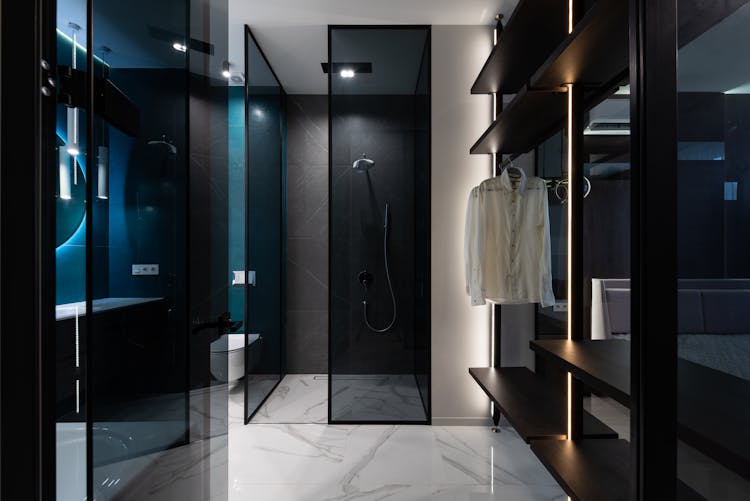All Categories
Featured
Table of Contents
🌍 TL;DR – Sustainable Closet Organization:
- 🌱 Understanding the importance of sustainable fashion
- ♻️ Reducing waste in your wardrobe effectively
- 👗 Emphasizing ethical and eco-friendly practices
- 📅 Implementing long-term wardrobe management strategies
Decoding Sustainable Fashion
Sustainable fashion encapsulates the movement to foster a responsible and conscious fashion industry. It aims to mitigate the negative environmental impacts of clothing production and promote fair labor practices across the globe. Transitioning to a sustainable wardrobe means supporting brands committed to ethical practices, those that champion transparency in their supply chains and adhere to certifications like Fair Trade and GOTS. Additionally, embracing eco-friendly materials such as organic cotton, hemp, and Tencel lyocell plays a pivotal role in shaping a more sustainable closet.
Consider the impact of fast fashion, where the insatiable appetite for trendy, low-cost garments leads not only to environmental degradation but also to social injustices faced by workers in factories worldwide. By understanding these issues, consumers can make informed choices and foster a culture of sustainability. Look to brands that prioritize environmentally responsible practices, which translate into a higher quality, longer-lasting garment ready to be cherished rather than tossed aside.
One excellent resource for delving deeper into the nuances of sustainable fashion is this insight into curating a sustainable wardrobe, aimed at promoting eco-conscious choices. Shifting from a consumerist mindset to one of conscious consideration allows us to curate collections of clothing that embody our values and lifestyle.
Reducing Waste in Wardrobes
The cornerstone of sustainable wardrobe management is conscious consumption. A key aspect of this philosophy is to step back before making a purchase and ask: do you really need it? Assess each garment for its longevity and versatility, which promotes mindful buying. Choose timeless pieces that can easily mix and match, offering endless configurations to refresh your style, and prioritize vintage or secondhand options where possible.
Thrifting and shopping at consignment stores not only give pre-loved garments a second chance but also lessen the demand for new clothing production, significantly curbing waste. By donating or selling unwanted items, you're helping to extend the life cycle of clothing and contribute to a circular economy. The ripple effect from these small actions can lead to substantial environmental benefits over time.
Moreover, organizations focused on sustainability highlight interesting alternatives. For instance, organizations such as Sustainable Fashion Deep-Dive advocate for eco-friendly wardrobe essentials that not only look good but also feel great, knowing you're making a difference.
Adopting Ethical Fashion Habits
Ethical clothing choices go beyond the clothing itself; they encompass supporting brands that prioritize fairness, workers' rights, and ecological sustainability throughout their production processes. Ensure that you look for certifications such as B Corp when purchasing clothing, as they indicate a commitment to high social and environmental performance standards. It's also essential to choose garments made from natural, biodegradable materials. As tempting as it may be to opt for those trendy synthetic fibers, remember that they come at a cost: contributing largely to microplastic pollution, which has dire implications for our oceans and ecosystems.
For a more sustainable approach, start evaluating your wardrobe in terms of organization. Proper storage of your clothes conserves quality and might even extend their lifespan. Hang items rather than folding them whenever possible, and utilize breathable garment bags for delicate fabrics to prevent deterioration over time. Eco-friendly storage solutions, such as bamboo or recycled containers, also factor into the commitment to sustainability.
By embodying eco-friendly practices around clothing care and storage, you're not just cultivating a sustainable wardrobe; you're making a profound statement about your commitment to ethical fashion. Great examples of this commitment can be learned from resources like this comprehensive look at the benefits of sustainable fashion.
Sustainable Wardrobe Longevity
Creating a long-lasting sustainable wardrobe is an evolving journey. Embracing a minimalist approach, particularly through capsule wardrobes, allows for more intentional living and thoughtful consumption. A capsule wardrobe consists of a carefully curated collection of essentials that mix and match effortlessly, reducing the need for excessive clothing. Staying focused on quality over quantity not only simplifies the overall wardrobe but also cultivates mindful consumer habits.
Regularly declutter your wardrobe to eliminate items that no longer serve you; whether they’ve gone out of style or simply don’t fit, parting with these unnecessary clothes can refresh your space. Consider investing in well-made garments that are built to last, rather than succumbing to fast fashion's fleeting trends. Ultimately, your commitment to sustainability becomes reflected in your wardrobe choices, creating a collection that tells a story and reflects your values.
Understanding these principles of sustainability will help you value the clothes you own. Spending some time with resources like industry insights on building ethical brands can further inform your choices, strengthening the efforts we all must make against environmental degradation.
What is sustainable fashion?
How can I reduce waste in my wardrobe?
✨ Key Takeaways: Sustainable Closet Organization
- 🌱 Curating a sustainable wardrobe supports ethical practices.
- ♻️ Mindful consumption minimizes waste.
- 👗 Emphasis on ethical production promotes transparency.
- 📅 Long-term wardrobe strategies enhance sustainability.

Eco-Chic Challenge: Sustainable Wardrobe Makeover
Latest Posts
Innovative Ways to Store Your Bread
The Ultimate Guide to Apartment Gardening
The Process of Requesting Free Credit Reports